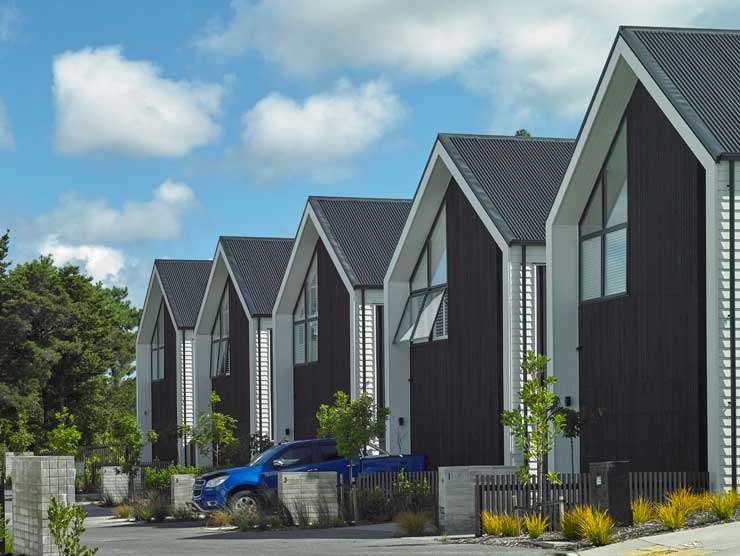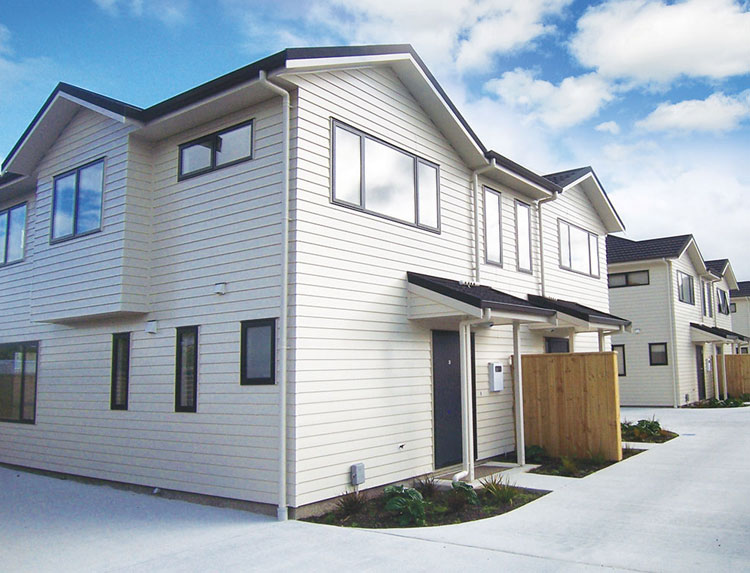Latest News
Infill housing offers a smart way to increase supply without expanding city boundaries. Hilary Anderson, from law firm Holland Beckett, looks at the opportunities for landowners and developers, along with legal and planning considerations.

As New Zealand’s towns and cities grow and bare land becomes limited, infill housing is becoming an obvious solution to meet demand. It involves building new homes – such as duplexes, townhouses or apartments – on existing urban sites, making better use of land, improving affordability and helping ease the housing shortage.
Infill housing contributes to the development of diverse and affordable communities by introducing a range of housing options within established urban areas. These homes are typically located close to existing amenities and public transport networks, making them highly accessible and convenient for residents. Making use of existing infrastructure helps ensure public facilities receive more routine attention, and are better maintained and regularly improved to meet increased demand and community needs. It also reduces the need for expensive new infrastructure projects, which can significantly increase the price of new housing when those costs are ultimately passed on to buyers. By increasing the supply of housing in these well-connected areas, infill development helps to moderate property prices, making home ownership a more realistic and attainable goal for a broader spectrum of the population.
The benefits of infill housing have been recognised by central government with the Resource Management (Enabling Housing Supply and Other Matters) Amendment Act 2021 requiring Tier 1 councils to adopt Medium Density Residential Standards. This legislative push is designed to remove barriers to development and encourage more efficient use of land in areas with existing infrastructure.
Tauranga City Council addressed this through Plan Change 33, while Western Bay of Plenty District Council implemented Plan Change 92 in response. Both plan changes have now been effective for more than a year and enable construction of up to three dwellings of up to three storeys on most residential sites without resource consent, and more through discretionary processes. These plan changes support a wider range of housing types and help both Councils plan and prioritise infrastructure upgrades – such as transport, utilities and public spaces – to support higher population densities.
For infill housing projects to be successful, thoughtful design is key. New developments need to respect the look and feel of the area, connect well to streets and parks, and include private and shared outdoor spaces. Safety and privacy can be improved with smart layouts, noise control and good lighting. The consenting processes for infill housing projects across the country all emphasise these principles, and planning rules are increasingly focused on ensuring new homes contribute positively to the surrounding environment and community.
Ownership structure also matters when planning an infill project. There is often a strong preference for freehold titles because they provide a high degree of control over land and buildings. Freehold is ideal for standalone homes with private yards and driveways. Unit titles (or strata ownership) is commonly used for higher-density developments, like apartment buildings or townhouses with shared spaces. However, either option can be made to work well in an infill context – it depends on the site, the design and the target market.

Beyond design and ownership, the long-term success and value of infill housing developments often comes down to the legal frameworks established during the development process. These include land covenants, body corporate rules and residents’ societies, which govern how shared spaces are managed and how people live alongside one another. Well-drafted rules help prevent disputes, ensure maintenance is carried out, and support a sense of community. Legal professionals play a key role in shaping these frameworks to suit the development and its residents.
Legislation plays a crucial role in unlocking the potential of infill housing sites. In many instances, outdated land covenants – originally designed to preserve neighbourhood character – are now unintentionally hindering higher-density development and obstructing the delivery of much-needed housing. At present, the only available methods for removing obsolete covenants are:
- Obtaining unanimous agreement from all property owners within the affected subdivision. This is frequently impractical due to the sheer number of stakeholders and the likelihood of disagreement or demands for compensation.
- Making an application to the Court under sections 316 and 317 of the Property Law Act 2007. To be successful, applicants generally need to show that:
- A material change has occurred in the use of the land or the nature of the neighbourhood;
- The covenant imposes an unreasonable restriction on the property’s use; and
- No party would suffer significant detriment as a result of the change.
Policymakers could help remove unnecessary barriers to infill housing by updating legislation in one of two ways. The first option is to allow covenants to automatically expire after a set period, without requiring further action. The second option is to reverse the burden of the current process: once a covenant reaches a certain age, notice would be given to all parties who benefit from it. If no one objects within the notice period, the covenant would be extinguished. To successfully object, a benefiting party would need to show that there has not been a material change in the use of the land or the character of the neighbourhood, that the covenant still serves a valid and proportionate purpose, or that they would suffer substantial detriment if it were removed or modified.
Thinking about developing your property? Whether you’re a homeowner with a large backyard or a landowner with a subdividable site, infill housing could be a smart way to unlock value. Get expert legal and planning advice to assess whether your site is suitable. With the right structure and support, you could turn unused space into valuable housing – and help the Bay of Plenty grow responsibly.
Infill housing isn’t just about building more homes – it’s about building better communities. Done well, it offers a practical, affordable and sustainable way to meet New Zealand’s housing needs.

Hilary Anderson, Partner at Holland Beckett, works with the Property and Commercial team and has a strategic focus on urban development and infill housing.
